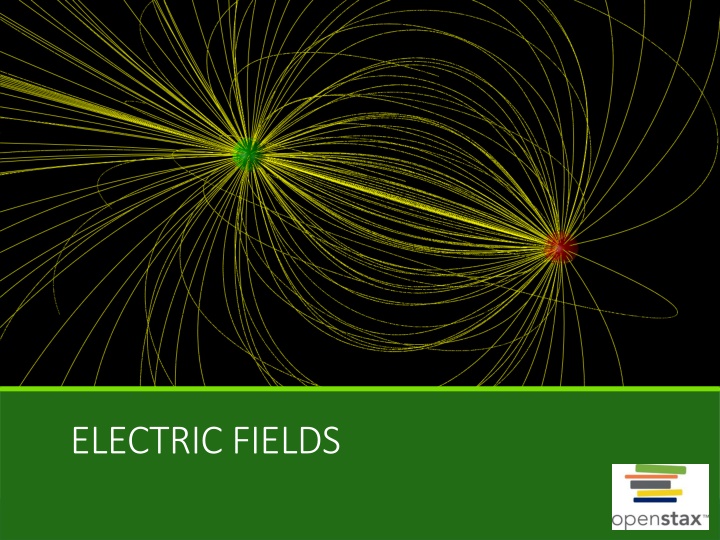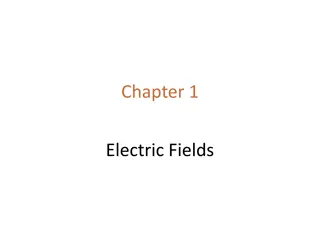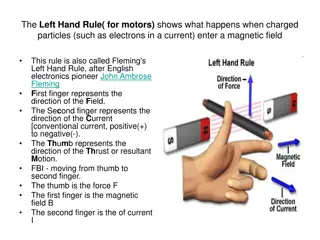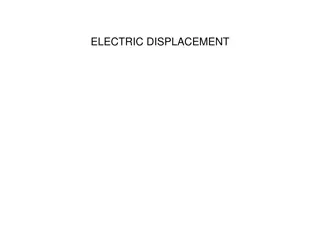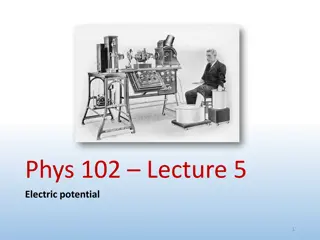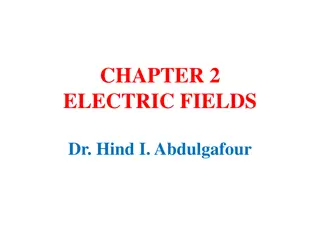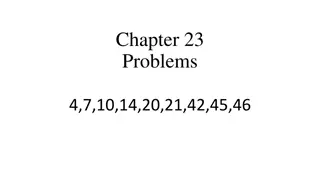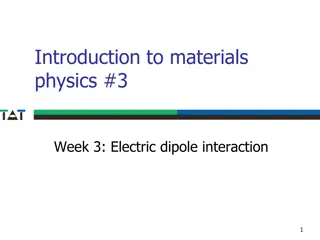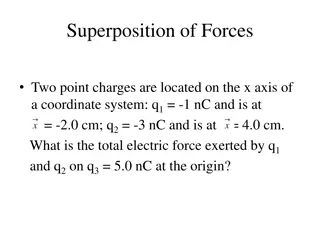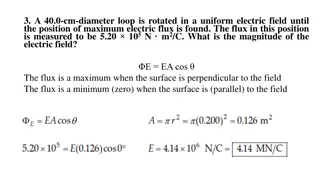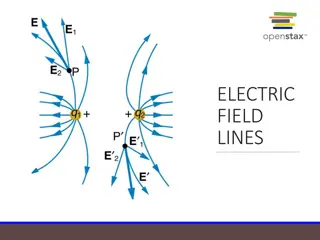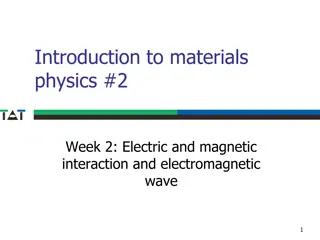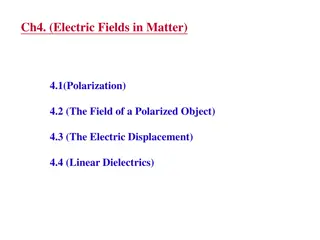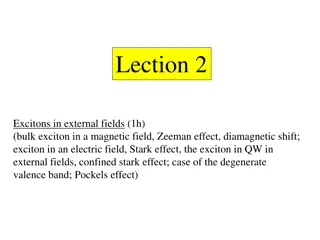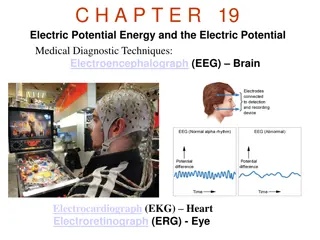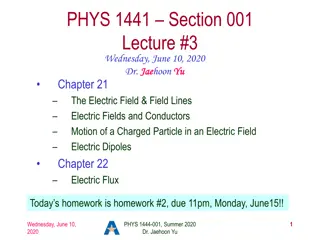Electric Fields: Concepts & Applications
Explore the concept of electric fields, their introduction, details, and example applications like finding the field of a proton. Learn about Coulomb's force field, vector nature of electric fields, and the superposition principle. Understand how charges influence the space around them and interact with each other through electric fields.
Download Presentation

Please find below an Image/Link to download the presentation.
The content on the website is provided AS IS for your information and personal use only. It may not be sold, licensed, or shared on other websites without obtaining consent from the author.If you encounter any issues during the download, it is possible that the publisher has removed the file from their server.
You are allowed to download the files provided on this website for personal or commercial use, subject to the condition that they are used lawfully. All files are the property of their respective owners.
The content on the website is provided AS IS for your information and personal use only. It may not be sold, licensed, or shared on other websites without obtaining consent from the author.
E N D
Presentation Transcript
The concept of the electric field The field model explains how the force due to charges is transmitted through empty space from one charge to another. The figure shows a shallow pan of oil with grass seeds floating on it. When positive and negative wires touch the oil, a pattern emerges. Some kind of electric influence from the charges fills the space around the charges.
Electric field: introduction The Coulomb force field due to a positive charge Q is shown acting on two different charges. Both charges are the same distance from Q . (a) Since q1 is positive, the force F1 acting on it is repulsive. (b) The charge q2 is negative and greater in magnitude than q1, and so the force F2 acting on it is attractive and stronger than F1. The Coulomb force field is thus not unique at any point in space, because it depends on the test charges q1 and q2 as well as the charge Q. Specifically, the electric field E is defined to be the ratio of the Coulomb force to the test charge:
Electric field: details Electric field is a vector. SI Units: N/C. Direction of the electric field at a certain location is the same as the direction of the electric force on a positive test charge at this location. We can think about electric field as electric force per unit charge . The field belongs to the source charge. The electric field is independentof the charge q used to probe the field. The electric field depends only on the source charges that create the field. Note that if the electric field is known at certain location, a charge placed at that Location will experience the electric force:
The electric field of a point charge A point charge Q produces an electric field at all points in space. Starting with Coulomb s law, it is relatively easy to show that: Note that the field strength decreases with increasing distance. The field produced by a positive point charge points away from the charge. The field produced by a negative point charge points toward the charge. The total electric field at a point is the vector sum of the fields due to all the charges present.
Example: finding the electric field of a proton The electron in a hydrogen atom orbits the proton at a radius of 0.053 nm. What is the electric field due to the proton at the position of the electron?
Example: using superposition principle Determine the magnitude and the direction of the electric field at point A.
